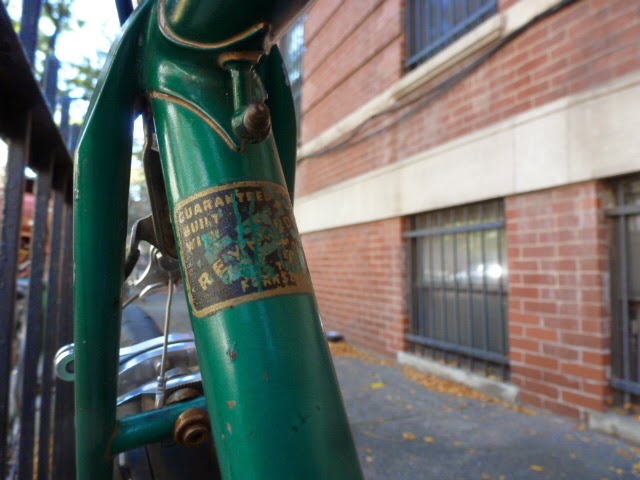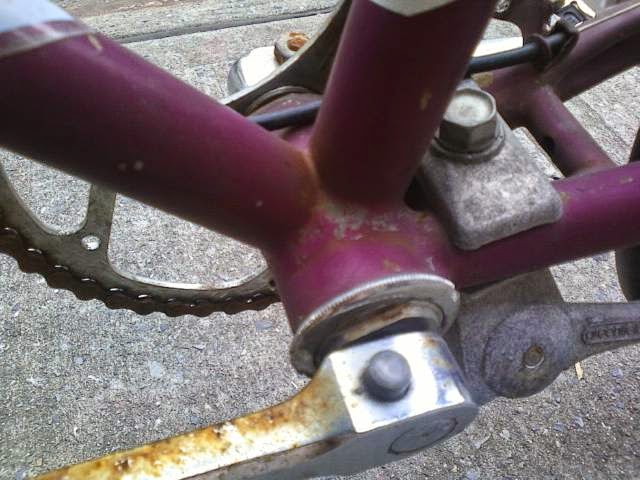Here in Astoria, as in other New York City neighborhoods, I see all sorts of re-purposed bikes locked to fences and signposts. Sometimes I wonder whether the folks who ride them have any idea of what they have.
A case in point is this World Voyageur I saw on a side street in my neighborhood.
In the mid-1970s, Schwinn sold bikes that were manufactured for them in Japan. Probably the best-known is the LeTour, which was basically a rebadged Panasonic Sport Deluxe and, it seemed, positioned to compete with bikes like the Peugeot UO-8 and Raleigh Grand Prix.
The World Voyageur was a couple of steps up from the LeTour. Both bikes had lugged frames, but the WV was constructed from double-butted chrome molybdenum tubing, in contrast to the LeTour's carbon steel. While the LeTour's rims were steel, the WV's hoops were Araya alloy. Both bikes had rebadged Dia Compe center-pull brakes, a standard on Japanese bikes of the time. They also had rebadged Shimano derailleurs and hubs, though I think the ones on the WV were Titlist: at that time, Shimano's second line, behind Dura Ace. It would form the basis of the popular 600 series Shimano would introduce a couple of years later.
Interestingly, Schwinn didn't try to rebadge the crankset: a very nice Dura-Ace. One reason why it didn't become more popular, I think, is that its chainring bolt circle diameter pattern, now called BCD or PCD, differed from Campagnolo's or other popular European cranksets of the time. Ironically, Dura Ace's BCD--130 millimeters--would become the de facto standard for road cranksets a decade later.
What made me wonder whether the owner of this bike has any idea of what he or she has are the handlebars and stem. My guess is whoever rides that World Voyageur inherited it from someone or bought it from someone who didn't know what they were selling.
My guess is that the bike in the photos is from 1973, as that seems to be the only year in which the World Voyageur was offered in that shade of blue.




.jpg)









































